Text
Not known Details About Weight Loss Services - Bariatrics - Mercy Health
Some Of Weight Loss Options - Santa Rosa Medical Center - Milton, FL
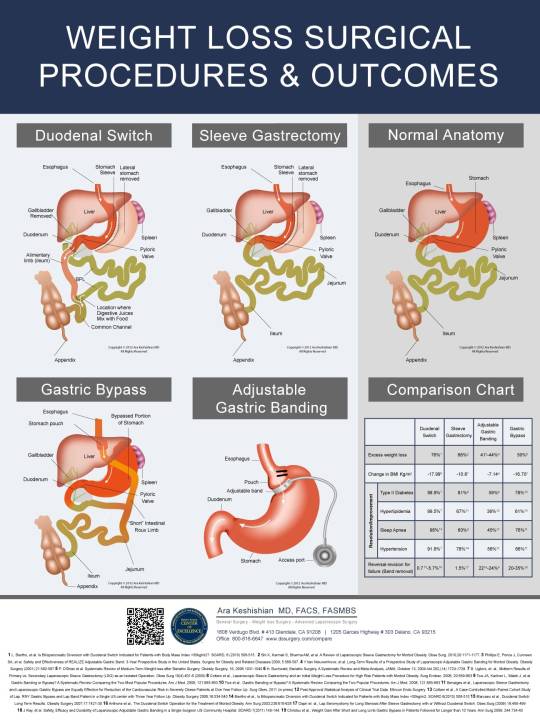
DDW 2019, Digestive Disease Week, San Diego, CA, May 18-21. Lisa Rivera, endoscopic sleeve gastroplasty patient, Manhattan. CDC, NCHS Data Quick: "Frequency of Obesity Amongst Adults and Youth: United States, 2015-2016," October 2017. Christopher Thompson, MD, director of endoscopy, Brigham & Women's Hospital; associate professor of medication, Harvard Medical School.

Weight loss: These are the 3 best (and 2 worst) dairy options for people following Keto diet - The Times of India
Reem Sharaiha, MD, associate professor of medicine, Weill Cornell Medication; assistant participating in physician, New York-Presbyterian, New York City City. Andres Acosta, MD, Ph, D, senior associate consultant, gastroenterology and hepatology, Mayo Center, Rochester, MN. Lian Cunningham, spokesperson BAROnova Inc. Stephanie Simon, representative, Gelesis. Mayo Clinic: "Endoscopic sleeve gastroplasty." Weight problems, Feb. 12, 2019.
CDC: "The Health Effects of Overweight and Obesity." Diane Utzman-O'Neill, director of marketing, Re, Forming Lifesciences Inc. Weight problems Surgery: "Effectiveness of Endoscopic Interventions for the Management of Obesity: a Meta-analysis to Compare Endoscopic Sleeve Gastroplasty, Aspire, Assist, and Primary Weight Problems Surgery Endolumenal." FDA: "FDA approves Aspire, Assist obesity gadget," "Trans, Pyloric Shuttle/Trans, Pyloric Shuttle Bus Shipment Device - P180024." Aspire: "Aspire, Assist Expense and Insurance Coverage." Spatz Medical.

Your Weight Loss Options - Acadiana Weight Loss Surgery
Reviewed By: If you fight with your weight, you simply have to see television (ads for exercise programs and diet plans) or stand at the grocery store checkout (publication headlines about "the best" method to lose the weight and keep it off) to understand that weight-loss is a goal for a lot of females.
Examine This Report on Surgical Weight Loss Options - Northside Hospital
While diet and workout can help keep a healthy weight, some individuals find it difficult to accomplish weight-loss with these techniques alone. For I Found This Interesting with other conditions, including type 2 diabetes, high blood pressure and cardiovascular disease, losing the weight can be critical. Weight loss surgical treatment like gastric bypass has long been suggested in these cases.
What do you do if you need to lose the weight but conventional weight-loss surgical treatment isn't ideal? That's where endoscopic weight reduction techniques come in. Vivek Kumbhari, M.D., director of bariatric endoscopy at Johns Hopkins and part of the Johns Hopkins Digestive Weight Reduction Center, discusses how these minimally intrusive techniques work, and why you might pick them over weight loss surgical treatment.
1 note
·
View note
Text
Qualify for Bariatric Surgery - MountainStar Health Things To Know Before You Buy
The Buzz on There are many weight loss options to be considered: dieting
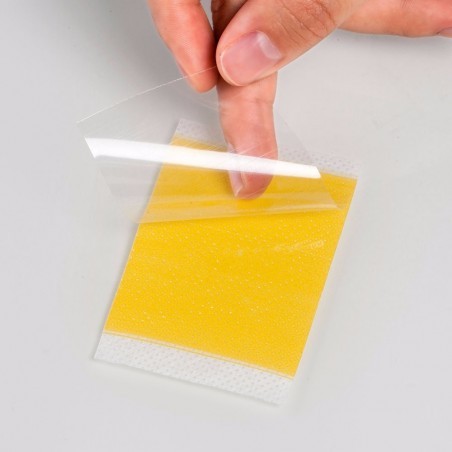
" They work better than medication, but are less invasive than surgical treatment and carry fewer negative effects and risks." Unlike bariatric weight loss surgery, which can need months of prep and numerous days of healing, endoscopy is a one-day procedure. "While the amount of weight loss isn't as remarkable as with surgery, the whole process generally takes simply a couple of hours," Kumbhari states.

Extreme Weight Loss Options - Stay At Home Mum
Gastric Balloon One of the most typical endoscopic weight-loss procedures is the gastric balloon. This treatment places a silicone balloon in the stomach to use up volume. With less space in your stomach, you consume less. Physicians may use a single balloon or a newer model that looks more like a dumbbell.
The delay in stomach emptying also assists with fullness," states Kumbhari. I Found This Interesting leave the balloon in place for about 6 months and patients can expect to lose up to 15 percent of their body weight. The treatment is approved for individuals with a body mass index (BMI) of 30 to 40.
9 Simple Techniques For Your Weight Loss Options - Acadiana Weight Loss Surgery
It's also bad for people with acid reflux, since it can make symptoms even worse. Aspiration Treatment Aspiration therapy is a new treatment that lets you remove calories from the stomach after you eat. Throughout the treatment, an endoscopy specialist places a little tube with a gain access to port into your stomach.
The procedure is perfect for obese individuals with a BMI greater than 35, and patients typically lose about 16 percent of their body weight during the preliminary 1 year treatment duration. Weight loss is more steady than with gastric balloon. "It's extremely basic and extremely safe," states Kumbhari. He states the gadget also helps people learn much better consuming practices that last after the gadget is removed.
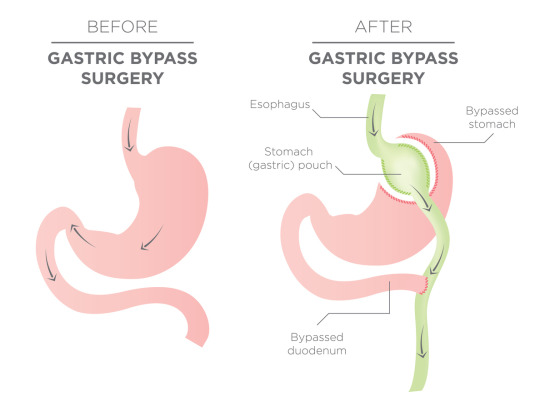
Weight Loss Surgery Options - Wellstar West Georgia Medical Center
Consuming more water and chewing food more completely helps the gadget function better. People likewise tend to eat less when they understand they will need to make a special journey to the bathroom later. Endoscopic Sleeve Gastroplasty During an endoscopic sleeve gastroplasty, an expert places stitches inside the stomach to lower its volume by 70 percent.
Getting The Surgical and Non-Surgical Weight Loss Options in Amarillo TX To Work
The stitches last about a year prior to the body reabsorbs them. Clients normally lose about 20 percent of their body weight with this treatment, which has more foreseeable results than a gastric balloon. "While some individuals lose a lot with the balloon, other individuals lose simply a little," Kumbhari says.
0 notes
Text
How Qualify for Bariatric Surgery - MountainStar Health can Save You Time, Stress, and Money.

Bariatric Embolization: Are Patients Actually Losing Weight? - Endovascular Today
Some Ideas on Weight Loss Options - Why Weight? You Need To Know
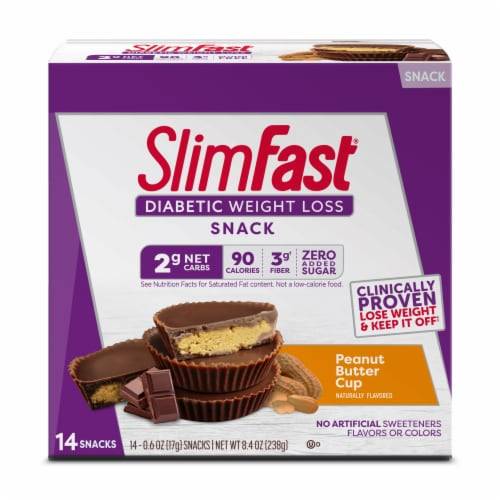
Meet Orbera the world's # 1 intragastric balloon weight-loss program that's shown to assist clients experience 3. 1x more weight reduction than diet & workout alone and supply the right tools and resources to successfully discover to keep it off. 2.
Take control of your weight with the Aspire, Assist, the reversible weight reduction procedure for long-term results.
The first thing Santa Monica weight-loss physician and surgeon Carson Liu, M.D. will inform you is that the desire to lose major weight, and how one chooses to go about it, is a deeply personal journey. Sometimes Research It Here and workout efforts are insufficient to shed undesirable poundsas any female who has actually battled her hormones can confirm, it's often a much more complicated formula.
Weight Loss Surgery Procedures - Louisville, Lexington - Questions
Listed below, he explains what is presently readily available, and provides guidance for navigating the option. A Q&A with Carson Liu, M.D. Q When do you suggest somebody go through a weight-loss treatment? A It's obviously suitable if you can get to a healthy weight by making modifications to your diet plan and exercise routine, however for somebody who has attempted this over time and still can not get to a more effective weight, I advise considering a procedure.
I have actually discovered that many individuals are discouraged from looking for weight-loss procedures due to the fact that they believe, "I am not there yet," or, "It's too harmful." However there's an illiteracy around weight-loss treatments, and understanding and understanding the offered options can assist. Procedures vary from non-invasive to very intrusive (surgical treatment). I like to begin with the least intrusive and go from there.
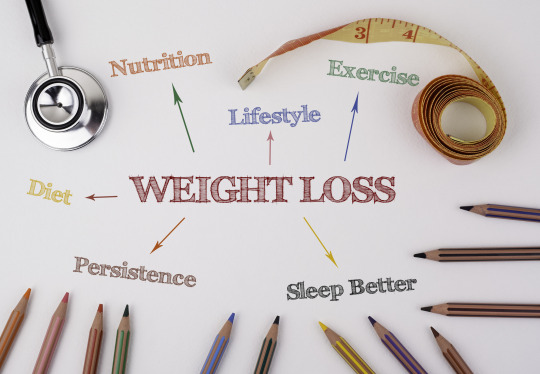
Endoscopic Techniques Allow for Noninvasive Treatment Options - University Hospitals
Q What makes an individual a good prospect for weight reduction treatments? A Many treatments are tailored towards individuals who have a Body Mass Index (BMI) of 30 kg/m2 or higher. BMI is your body weight in kilograms divided by your height in meters squared. It's a mathematical computation, and taken alone, it's not always the best method to categorize people, as it tends to misrepresent muscle mass.
0 notes
Text
The Facts About Weight Loss and Management - Lehigh Valley Health Network Revealed
How Houston Weight Loss Program - Texas Laparoscopic can Save You Time, Stress, and Money.
DDW 2019, Gastrointestinal Illness Week, San Diego, CA, May 18-21. Lisa Rivera, endoscopic sleeve gastroplasty patient, Manhattan. CDC, NCHS Data Quick: "Prevalence of Weight Problems Amongst Adults and Youth: United States, 2015-2016," October 2017. Christopher Thompson, MD, director of endoscopy, Brigham & Women's Healthcare facility; associate teacher of medicine, Harvard Medical School.
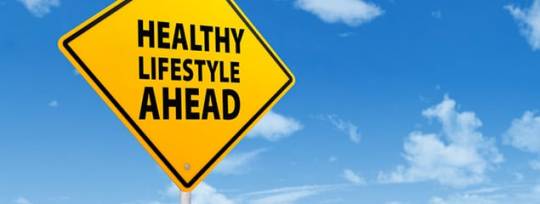
Weight Loss Options - Home - Facebook
Reem Sharaiha, MD, associate professor of medication, Weill Cornell Medicine; assistant going to doctor, New York-Presbyterian, New York City City. I Found This Interesting , MD, Ph, D, senior associate expert, gastroenterology and hepatology, Mayo Clinic, Rochester, MN. Lian Cunningham, representative BAROnova Inc. Stephanie Simon, spokesperson, Gelesis. Mayo Center: "Endoscopic sleeve gastroplasty." Obesity, Feb. 12, 2019.
CDC: "The Health Impacts of Overweight and Obesity." Diane Utzman-O'Neill, director of marketing, Re, Shape Lifesciences Inc. Weight problems Surgical Treatment: "Effectiveness of Endoscopic Interventions for the Management of Weight Problems: a Meta-analysis to Compare Endoscopic Sleeve Gastroplasty, Aspire, Assist, and Main Obesity Surgery Endolumenal." FDA: "FDA authorizes Aspire, Assist obesity device," "Trans, Pyloric Shuttle/Trans, Pyloric Shuttle Bus Delivery Gadget - P180024." Aspire: "Aspire, Assist Cost and Insurance." Spatz Medical.

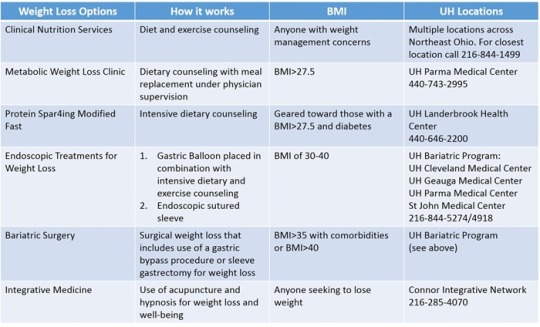
A New Therapeutic Option for Weight Loss - by DrJason Fung - Medium
Examined By: If you have problem with your weight, you simply need to see tv (advertisements for exercise programs and diet plan strategies) or stand at the grocery store checkout (publication headings about "the very best" way to lose the weight and keep it off) to know that weight-loss is a goal for a great deal of females.
All about Weight Loss Options - Regional Medical Center
While diet plan and exercise can help preserve a healthy weight, some people discover it hard to attain weight reduction with these techniques alone. For individuals with other conditions, including type 2 diabetes, high blood pressure and heart problem, losing the weight can be critical. Weight loss surgery like gastric bypass has long been recommended in these cases.
What do you do if you require to lose the weight but standard weight loss surgical treatment isn't appropriate? That's where endoscopic weight-loss techniques been available in. Vivek Kumbhari, M.D., director of bariatric endoscopy at Johns Hopkins and part of the Johns Hopkins Digestive Weight-loss Center, explains how these minimally intrusive techniques work, and why you may pick them over weight loss surgery.
0 notes
Text
The routine that helped this woman lose 70+ pounds
I was always on the heavier side, even when I was in grade school. Things just got worse after I graduated high school in 2007 and started working at a tanning salon. It was a slow-paced job, and during the off season, I might sit in the same spot for hours, and I ate when I was bored on the job. Pizza, burgers, chips, sweets—you name it. Friends would visit me and bring more food, and even if I was full, I would eat. And I wasn't working out at all.
Then, in late 2007, my brother was training for his first MMA fight, and I came to watch. I noticed that two men were essentially his eyes during the match, calling out suggestions to him to help him fight. I realized that Iwanted to be in his corner, helping him just like them. But first, I needed to understand the world of martial arts. So I joined a boxing gym.
Source: https://www.msn.com/en-us/health/voices/the-routine-that-helped-this-woman-lose-70plus-pounds/ss-AAvGsn7?srcref=rss
0 notes
Text
What Diet-Culture Recovery *Really* Looks Like
I’m back from my honeymoon, although I must admit I never wanted it to end.
We were in Oahu, which was incredible and romantic and such a needed recharge—I was also off social media for 2 weeks, which seriously gave me life—but also occasionally messy and imperfect and unpredictable, like life itself.
I could just tell you about the gorgeous parts, which far outweighed the messy ones, but as my brilliant pal Jes Baker points out in her latest book, Landwhale (which I finished devouring by a pool), being a diet-culture-recovery advocate who never shares their messiness can lead to unrealistic expectations of what recovery really looks like.
It can make people think life in recovery is 100% sunshine and rainbows, which it most certainly is not (although the sunshine-and-rainbows-to-gloominess ratio is definitely WAY higher than it was in the throes of diet culture).
So instead, I’ll tell you about our trip to the breathtaking Hanauma Bay, the island’s top snorkeling spot, where I had a mild panic attack when I couldn’t figure out how to breathe through my snorkel at first.
And I’ll tell you about the unbelievable view of the Pacific from our balcony at the resort (thanks to my in-laws for hooking that up), where I had another panic attack when a giant bug wandered onto the scene.
I’ll tell you about how I ate a dodgy room-temperature Spam Musubi because it was delicious and I pride myself on eating anything, but soon thereafter I got terrible food poisoning, which then led to a crying jag because being sick freaks me the f*** out.
I’ll tell you about the time I sat on the beach with a piña colada, trying to get my happy vibes back after seeing our professional wedding photos for the first time and having a moment of body-image BS from diet culture—because even the most ardent anti-diet activists sometimes have bad body-image days.
And I’ll tell you about Fumi’s, our favorite shrimp truck in Kahuku, a super fun day trip where my husband did all the driving because I’ve recently developed major anxiety about my own ability to drive on freeways, for obscure PTSD-related reasons that I’m still untangling.
So lest I ever come across as having it all together, let me assure you that I do not 😂 I love my life more than ever these days, AND sometimes I still have mental-health challenges just like anyone else.
I share this to show that all of us, no matter how far we’ve come or what we do for a living, are human.
We all have our stories, and we all have our reasons for going into the careers we do.
When it comes to those of us who make anti-diet activism our life’s work, many of us have gone through our own history of disordered eating and body shame, and we’re forever changed by that experience.
Once we get to a place of peace with food and our bodies (which includes the occasional bad body-image day, because, again, not 100% sunshine and rainbows), we feel pulled to help other people get there, too.
That’s what drove my guest on this week’s episode of Food Psych to the work she does now.
These days Fiona Willer is a badass anti-diet dietitian from Australia who lectures at universities all about Health at Every Size, but as a teenager and young adult she struggled with body shame and binge eating.
She shares how her efforts at “clean eating” only made the problem worse, how learning about mindfulness helped her heal her own relationship with food and her body, and what it’s like to be a lecturer teaching a radically different paradigm than her students are used to.
We also talk about how scientists are human, too, and how it affects the outcome and interpretation of research when their perspectives are influenced by diet culture (as most are in our society).
It’s a great episode, and I know you’ll love Fiona as much as I do, so be sure to check it out here or wherever you get your podcasts!
Here’s to recovery, in all its messy glory,
Christy
P.S. If you’re craving support and guidance from fellow humans on your journey to peace with food and your body, come check out my intuitive eating online course and community. It’ll help you break free from diet culture so that you can get back to living your life—ups, downs, and all.
Like This Post? Subscribe for More!
Enter your email address to get exclusive blog posts and other great (free) content, starting with a 4-day mini-course on making peace with food!
<![CDATA[/* Layout */ .ck_form.ck_minimal /* divider image */ background: #f9f9f9; font-family: 'Helvetica Neue', Helvetica, Arial, Verdana, sans-serif; line-height: 1.5em; overflow: hidden; color: #383838; font-size: 16px; border: solid 1px #d1d1d1; -webkit-box-shadow: none; -moz-box-shadow: none; box-shadow: none; clear: both; margin: 20px 0px; text-align: center; .ck_form.ck_minimal h3.ck_form_title text-align: center; margin: 0px 0px 10px; font-size: 28px; .ck_form.ck_minimal h4 text-align: center; font-family: 'Open Sans', Helvetica, Arial, sans-serif; text-transform: uppercase; font-size: 18px; font-weight: normal; padding-top: 0px; margin-top: 0px; .ck_form.ck_minimal p padding: 0px; .ck_form, .ck_form * -webkit-box-sizing: border-box; -moz-box-sizing: border-box; box-sizing: border-box; .ck_form.ck_minimal .ck_form_fields width: 100%; float: left; padding: 5%; /* Form fields */ .ck_errorArea display: none; /* temporary */ #ck_success_msg padding: 10px 10px 0px; border: solid 1px #ddd; background: #eee; .ck_form.ck_minimal input[type="text"], .ck_form.ck_minimal input[type="email"] font-size: 18px; padding: 10px 8px; width: 68%; border: 1px solid #d6d6d6; /* stroke */ -moz-border-radius: 3px; -webkit-border-radius: 3px; border-radius: 3px; /* border radius */ background-color: #fff; /* layer fill content */ margin-bottom: 5px; height: auto; float: left; margin: 0px; margin-right: 2%; height: 42px; .ck_form input[type="text"]:focus, .ck_form input[type="email"]:focus outline: none; border-color: #aaa; .ck_form.ck_minimal .ck_subscribe_button width: 100%; color: #fff; margin: 0px; padding: 11px 0px; font-size: 18px; background: #d64550; -moz-border-radius: 3px; -webkit-border-radius: 3px; border-radius: 3px; /* border radius */ cursor: pointer; border: none; text-shadow: none; width: 30%; float: left; height: 42px; .ck_form.ck_minimal .ck_guarantee color: #626262; font-size: 12px; text-align: center; padding: 15px 0px 0px; display: block; clear: both; .ck_form .ck_powered_by display: block; color: #aaa; font-size: 12px; .ck_form .ck_powered_by:hover display: block; color: #444; .ck_converted_content display: none; padding: 5%; background: #fff; .ck_form.ck_minimal.width400 .ck_subscribe_button, .ck_form.ck_minimal.width400 input[type="email"] width: 100%; float: none; margin-top: 5px; .ck_slide_up, .ck_modal, .ck_slide_up .ck_minimal, .ck_modal .ck_minimal min-width: 400px; .page .ck_form.ck_minimal margin: 50px auto; max-width: 600px; /* v6 */ .ck_slide_up.ck_form_v6, .ck_modal.ck_form_v6, .ck_slide_up.ck_form_v6 .ck_minimal, .ck_modal.ck_form_v6 .ck_minimal min-width: 0 !important; @media all and (min-width: 801px) .ck_modal.ck_form_v6 .ck_form.ck_minimal margin-left: -300px; width: 600px; .ck_modal.ck_form_v6 .ck_minimal .ck_subscribe_form padding-top: 20px; .ck_slide_up.ck_form_v6 .ck_minimal .ck_subscribe_form padding-top: 10px; .ck_form_v6 #ck_success_msg margin-top: 15px; padding: 0px 10px; .ck_slide_up.ck_form_v6 .ck_minimal + .ck_close_link top: 5px; .ck_slide_up.ck_form_v6 .ck_minimal h3.ck_form_title margin-top: 5px; ]]>
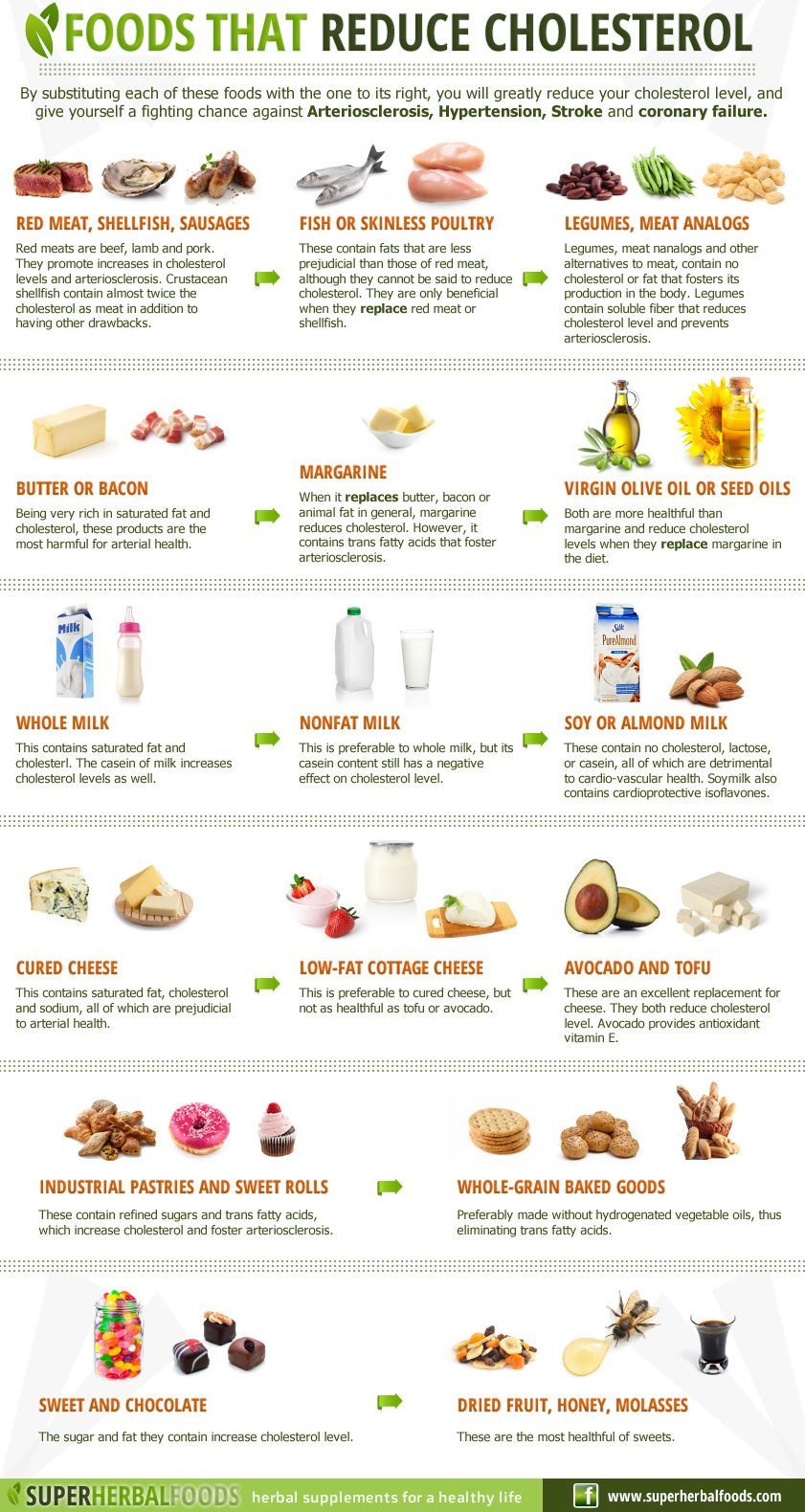
Source: https://christyharrison.com/blog/what-diet-culture-recovery-really-looks-like
0 notes
Text
Ciguatera: The Killer Toxin in Fish
I had never heard of Ciguatera until I traveled to the South Pacific, where it is a public health concern. Ciguatera is a food poisoning disease caused by ingesting fish contaminated by a certain micro-algae. The toxin has no taste, and cannot be destroyed by cooking or any other method.
Ocean fish is not contaminated because it doesn’t feed on coral. It is reef fish and other fishes eating them that are infected.
In French Polynesia, I have never met a person who did not have a ciguatera story to tell me. One man was plagued by terrible headaches caused by years of repetitive ciguatera poisoning. He loved eating fish so much that he could not conceive not eating it — which is the only step that can lead towards healing.
On atolls, where reef fish is one of the primary sources of nutrition, almost everyone has been intoxicated at some point. Fishermen supposedly know where the safe spots are, but even their experience is not enough to prevent ciguatera.
Although ciguatera has existed for thousands of years, it is more of a concern these days because the toxic algae grow on dead coral, and the death of coral is increasing due to climate change.
The symptoms of ciguatera poisoning are pretty straightforward, but the after-effects can last for years and turn into a debilitating illness if the person keeps getting poisoned again, as the toxin accumulates in the body.
Symptoms include:
Gastrointestinal symptoms
Muscle aches and headaches
Nausea, vomiting, and diarrhea
Those symptoms tend to occur immediately after poisoning, but afterward, neurological symptoms set in, such as:
Reversal of hot/cold sensation (drinking a cold drink will feel like drinking hot coffee, and a dive in the pool will feel like jumping into hot water!)
Hallucination, depression, and nightmares.
Numbness, vertigo
The severity of the illness will depend on the amount of the toxin consumed and also repeated exposure. A tourist visiting Bora-Bora for the first time and eating contaminated fish might not feel anything, but locals might end up visiting the emergency room because they’ve had years of previous exposure.
Repeated exposure can lead to a sort of chronic illness, like the man I met in Tahiti who had chronic headaches.
But ciguatera poisoning can happen to anyone eating fish and in some cases lead to death.
Around 15,000 Americans get the disease every year, often eating the usual suspects like red snapper or grouper.
But the problem is that around one-third of fish sold in the US is mislabeled. That means that the fish on the menu in a restaurant is not always what it claims to be and can lead to ciguatera poisoning.
Should You Worry About Ciguatera?
If you never eat fish, then you will never get ciguatera. That is the safest way to avoid ciguatera.
If you only eat ocean fish or other varieties that are not contaminated and you are 100% certain about their origin, then it’s also unlikely that you’ll get poisoned.
If you eat fish when traveling or eat species that can be contaminated, like red snapper, or you eat fish at a restaurant or buy it at the grocery store, and it could be possibly mislabeled, then you are also at risk.
Examples of reef fish that can be contaminated by ciguatera include barracuda, moray eel, snapper, grouper, sturgeon, and sea bass. There are of course numerous other types of fish that you only find in the lagoons of Pacific islands that could also be contaminated.
Please leave your comments below!
Frederic
Related Posts
Clueless About Caffeine Withdrawals Quitting the Coffee Habit Without Pain and Suffering How Dense Are Your Nutrients? The Migraine Solution Diet
Frederic Patenaude
Frederic Patenaude has been an important influence in the raw food and natural health movement since he started writing and publishing in 1998, first by being the editor of Just Eat an Apple magazine. He is the author of over 20 books, including The Raw Secrets, the Sunfood Cuisine and Raw Food Controversies. Since 2013 he’s been the Editor-in-Chief of Renegade Health.
Frederic loves to relentlessly debunk nutritional myths. He advocates a low-fat, plant-based diet and has had over 10 years of experience with raw vegan diets. He lives in Montreal, Canada.
Source: http://www.fredericpatenaude.com/blog/?p=4686
0 notes
Text
Eggs in a Bacon Basket
Welcome to /r/ketorecipes! You can find our rules here and the Keto FAQs here. Please be sure to include a detailed recipe in your post (this means ingredients, directions, and plain text) or in the comments, not a link to the recipe, or it will be removed per the sub rules!* Please report any rule-violations to the moderators and keep doing the lard's work!
I am a bot, and this action was performed automatically. Please contact the moderators of this subreddit if you have any questions or concerns.
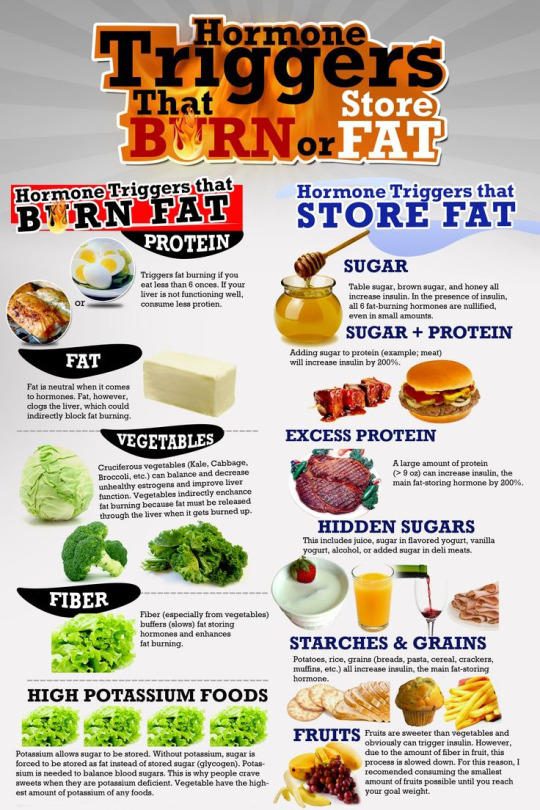
Source: https://www.reddit.com/r/ketorecipes/comments/a2qxhj/eggs_in_a_bacon_basket/
0 notes
Text
June 17th, 2019 Worth It
June 17th, 2019 Worth It
Yesterday was a 4-star day: I maintained the integrity of my calorie budget, I remained refined sugar-free, I exceeded my daily water goal, and I stayed well connected with exceptional support.
I stopped by mom's after some weather coverage tonight. I didn't stay long, just long enough to check on her and see that she's doing fairly well, considering the healing is still in progress. They've started doing physical therapy too, so that's good.
I made a quick grocery trip before coming home to prepare dinner. One of my favorite meals--and I haven't had it in a while (see the Instagram below), so that was really good. I'm headed to bed soon. We might have severe weather overnight--I hope not, but more is in the forecast!
If you're thinking about joining the accountability and support group I facilitate now's the time to register! Our next 8-week session starts tomorrow!!
What does $2.14 a day buy? A cup of coffee? A gallon of gas? A couple of items from a fast food value menu?
What if I told you an average of $2.14 a day could enter you into a private-exclusive weight loss accountability and support group? This group is NOT about dieting, it's about living.
It's not a weight loss plan. It's not a diet. It's a tool to help you identify, create, strengthen, and practice a sustainable plan for you. Like any tool, the more you pick it up and use it, the more it helps. This group is all about support and accountability--and those two things have been absolute non-negotiable elements of success in my ten-plus-year experience along this road.
What if that support group was much more than a weekly live-conference call? What if it was also 24/7 spot support via text and direct communications with fellow group members and me? You'll also be able to take advantage of daily accountability and support measures on the "secret" Facebook group page!
Could this make a difference for you?
Is it worth an average of $2.14 a day?
If you're tired of doing the same thing and getting the same outcomes, join our team!
Our 8-week support group is small, exclusive and personal. It's powerful support. It's different. And it's available to you from wherever you are located.
There's something special about this group.
It's the power of accountability and support. It's about not going it alone. It's sharing this commitment with fellow team members who can relate to your experience.
Our individual plans are unique, our goals are unique, our current status (weight loss/maintenance) can be different--my goodness, we have members just getting started and some who are in maintenance mode or real close! We have members who have lost in excess of 200 pounds--and some whose goal was 20 or 30...it's all relative.
This is a diverse group-- but one thing is remarkably similar. Each member who makes an effort to engage, commit to and embrace the accountability and support offered, typically experiences success.
If you're interested email me right away with questions! [email protected]
View this post on Instagram
#whatsfordinner The filling: 100g red onion, 4oz sliced baby portobello mushrooms, 7oz 96% lean ground beef, and 5oz angel hair cabbage. Filling loaded into three Joseph's Flax-Oat Bran-Whole Wheat Pitas smeared with 4 tablespoons sour cream. #foodplan #dailypractice #simplecooking 647 cal.
A post shared by Sean Anderson (@seanaanderson) on Jun 18, 2019 at 6:45pm PDT
Thank you for reading and your continued support,
Practice, peace, and calm,
Sean
If you're interested in connecting via social media:
I accept friend requests on MyFitnessPal. My daily food logging diary is set to public.
MFP Username: SeanAAnderson
My Twitter: SeanAAnderson
Facebook: www.facebook.com/seananderson505
Instagram: SeanAAnderson
Also--I'd love you to subscribe to my podcast Transformation Planet! You can find it in Apple Podcasts, in the Google Play store for Android, and listed wherever you find your favorite podcasts! If you haven't listened before, you'll find 20 episodes waiting for you!
Questions or comments? Send an email! [email protected]
Source: http://losingweighteveryday.blogspot.com/2019/06/june-17th-2019-worth-it.html
0 notes
Text
[Preview] Kristie cooking keto with dr. Georgia Ede
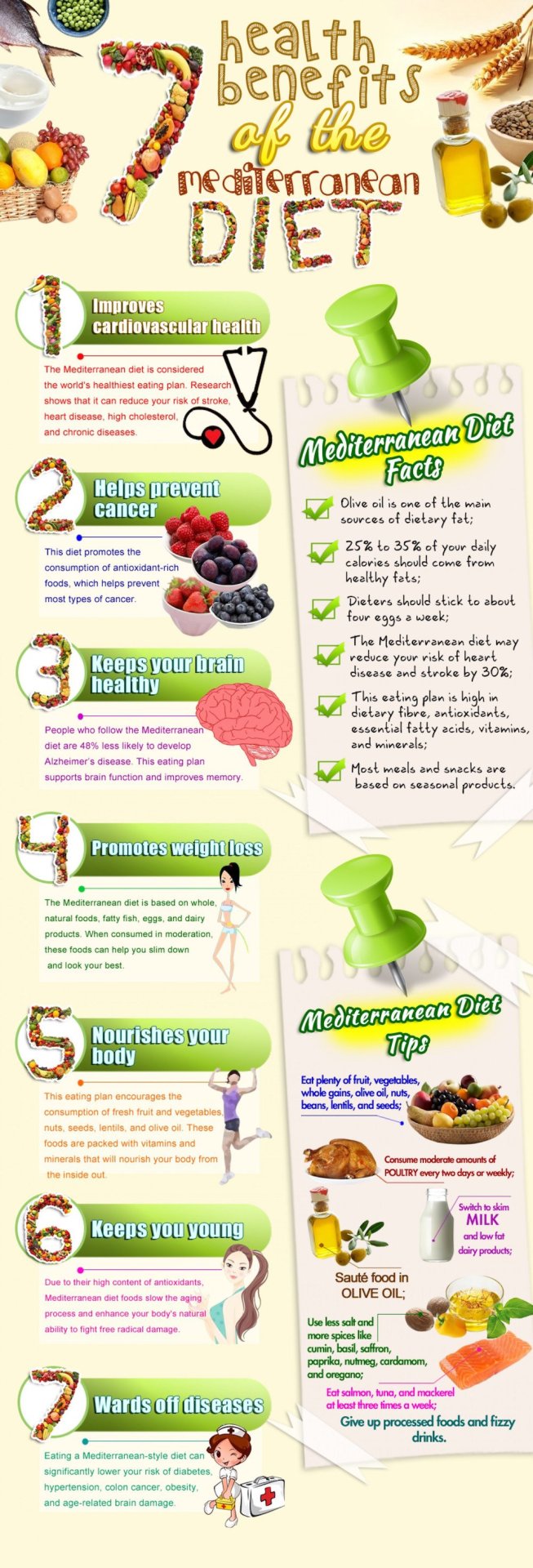
Source: http://www.youtube.com/oembed?format=xml&url=https%3A%2F%2Fwww.youtube.com%2Fwatch%3Fv%3DBHdpuL1J8po
0 notes
Text
Fast Metabolism Diet Review: Does It Work for Weight Loss? - Healthline
Many people are interested in boosting their metabolism as a strategy for weight loss.
The Fast Metabolism Diet asserts that certain foods eaten at the right times can speed up your metabolism, allowing you to eat a lot and still lose weight.
However, like many contemporary diets, it’s gotten mixed reviews.
This article reviews whether the Fast Metabolism Diet can help you lose weight.
Rating Score Breakdown
Overall score: 3.25
Fast weight loss: 3
Long-term weight loss: 3
Easy to follow: 3
Nutrition quality: 4
BOTTOM LINE: The Fast Metabolism Diet focuses on eating specific foods in a certain order to boost metabolism. This principle and its effectiveness are not backed by science. Yet, the emphasis on healthy foods and exercise may aid weight loss.

Share on Pinterest
The Fast Metabolism Diet is a nutrition program that promises to help you lose up to 20 pounds (9 kg) in 28 days.
It was developed by Haylie Pomroy, a celebrity nutritionist and wellness consultant with an academic background in animal science.
The diet claims that eating particular foods at certain times tricks your metabolism into speeding up, resulting in weight loss.
In addition to a weekly food plan, you receive an extensive list of foods to avoid. The diet also encourages exercise 2–3 times per week.
If you haven’t reached your goal weight by the end of the first 28-day cycle, you are encouraged to start again, staying on the diet until you have lost your desired amount of weight.
Once you’ve reached your weight goal, you are told you can maintain your results by repeating one week of the cycle every month — or the full four-week cycle once every six months.
Although some principles of this nutrition program are supported by science, most of its claims are not based on solid scientific evidence.
Summary The Fast Metabolism Diet is a 28-day program that aims to rev up your metabolism so that you can lose excess weight.
The Fast Metabolism Diet program is split into three phases which are repeated on a weekly basis for a total of four weeks.
Each phase emphasizes different foods and provides recommendations for various physical activities.
Portion sizes vary by phase and depending on the amount of weight you want to lose. Below are the main guidelines organized by phase.
Phase 1 (Monday–Tuesday)
The diet’s promoters claim that this phase unwinds stress and convinces your body that it is no longer trying to store fat.
During these two days, you should eat a high-glycemic, carb-rich diet with moderate amounts of protein. Fats should be avoided.
This is meant to reduce stress and anxiety, prepare your body for weight loss and encourage your adrenal glands to produce lower amounts of the stress hormone cortisol.
Foods to eat include high-glycemic fruits, such as pears, mango, pineapple and cantaloupe, as well as high-carb whole grains, such as oatmeal, brown rice, spelt and brown-rice pasta.
This phase also promotes foods rich in vitamins B and C, such as lean beef, lentils, oranges, turkey and kiwi. These are thought to stimulate your thyroid to burn fats, protein and carbs more efficiently — and convert sugar into energy instead of storing it as fat.
During this phase, you are encouraged to include at least one aerobic workout.
Phase 2 (Wednesday–Thursday)
This phase is supposed to unlock fat stores and build muscle. During these two days, your diet should be rich in protein and non-starchy, alkalizing vegetables, yet low in carbs and fats.
Lean, high-protein foods that help create muscle include beef, bison, turkey, fish and chicken (1).
This phase also includes vegetables, such as cabbage, broccoli, kale, spinach, cucumbers and collard greens.
The diet plan claims that these vegetables are alkalizing and supposedly lower the acidity of your blood, stimulating your liver to release fat cells.
At the same time, they’re said to provide the enzymes and phytonutrients needed to break down high-protein foods.
However, keep in mind that your body tightly regulates your blood pH level, keeping it slightly alkaline around 7.36–7.44. In fact, it could have detrimental consequences if the pH of your blood falls out of its normal range (2, 3).
So, while the vegetables promoted for the second phase are very healthy, they’re not healthy because of their supposed effects on blood pH.
During the second phase, you are encouraged to do at least one weight-lifting session.
Phase 3 (Friday–Sunday)
This phase is designed to accelerate your metabolism and fat burning.
During these three days, you are encouraged to add many healthy fats to your meals and snacks while consuming moderate amounts of protein and carbs.
Foods to eat in this phase include olive or grapeseed oil, safflower mayonnaise, eggs, nuts, seeds, coconut, avocados and olives.
Foods like seaweed, coconut oil, shrimp and lobster should also be included since the diet claims that they boost metabolism by stimulating your thyroid gland.
During this phase, you are encouraged to pick an activity that allows you to unwind, such as yoga, meditation or even a massage. This is meant to lower stress hormone levels and increase the circulation of fat-burning compounds.
Summary The Fast Metabolism Diet is split into three phases which are repeated on a weekly basis for four weeks. Each phase has a different goal and specific diet and exercise recommendations.
The Fast Metabolism Diet warns against some foods which should be avoided whenever possible.
These include:
Wheat
Corn
Dairy
Soy
Dried fruit
Fruit juices
Refined sugar
Artificial sweeteners and foods containing them
Caffeine
Alcohol
Fat-free diet foods
However, the diet’s founder does make an exception for vegetarians and vegans, who are allowed to eat three soy foods: tempeh, tofu and edamame. Note that these must be organic and not genetically modified (non-GMO).
On this diet, non-organic produce and nitrate-containing meats are also banned because the additives, preservatives, pesticides, insecticides and hormones they may host are thought to slow down your liver’s burning of fat.
Summary The Fast Metabolism Diet excludes wheat, corn, dairy, soy, sugar, dried fruit, juices, caffeine, alcohol and fat-free diet foods. It also discourages non-organic foods.
Aside from following the diet and physical activity guidelines for each phase, the Fast Metabolism Diet includes a few additional rules.
Eat five times per day.
Eat every 3–4 hours except when sleeping.
Eat within 30 minutes of waking.
Follow the phases in order.
Stick to the foods allowed in each phase.
Exercise according to the phase you’re in.
Drink half of your body weight (measured in pounds) in ounces of water each day.
Avoid wheat, corn, soy, dairy, dried fruit, fruit juices, refined sugar, artificial sweeteners, caffeine, alcohol and fat-free diet foods.
Eat organic whenever possible.
Ensure that meats are nitrate-free.
Follow the plan for the full 28 days and repeat until your weight loss goal is achieved.
Repeat the fast metabolism plan for a full 28 days every six months or for one week every month.
Summary The Fast Metabolism Diet includes additional rules meant to help you achieve and maintain weight loss.
The Fast Metabolism Diet likely helps you lose weight for several reasons.
First, it incorporates plenty of whole foods. This may increase your fiber intake, which may contribute to weight loss (4, 5).
Next, excluding soy, wheat, refined sugar and sweeteners further cuts out many processed foods from your diet. This can naturally reduce the number of calories consumed, further promoting weight loss.
What’s more, the prescribed weekly physical exercise is likely to increase the number of calories burned, further contributing to the energy deficit needed for weight loss.
Moreover, hydration — emphasized strongly in the diet — can lower appetite and may help you burn a few more calories to promote additional weight loss (6, 7, 8).
Other Benefits
The Fast Metabolism Diet may offer additional benefits.
By incorporating plenty of fruits, vegetables, lean protein and healthy fats, it’s richer in vitamins and minerals than some other diet plans.
Its extensive list of foods to avoid also naturally curbs your intake of highly processed, empty-calorie foods, leaving more room for nutrient-rich ones.
The fiber content may also promote gut health, blood sugar control and immune and brain function (9, 10, 11, 12).
Summary The Fast Metabolism Diet may help you lose weight by boosting your fiber intake and cutting down on unnecessary calories. Its emphasis on whole foods also makes it richer in nutrients than other diets.
The Fast Metabolism Diet has major drawbacks as well. Here are some of the most prominent.
Based on Pseudoscience
The Fast Metabolism Diet puts a strong emphasis on consuming specific foods in a certain order to boost metabolism and promote weight loss.
However, there is little scientific evidence backing such principles.
For instance, Phase 1 advocates a high-glycemic, carb-rich diet as a way to encourage your adrenal glands to produce fewer stress hormones and prepare your body for weight loss.
However, research shows that high intake of simple carbs may raise stress hormone levels — not diminish them (13).
Despite claims to the contrary, there is also no evidence that eating carb-rich foods for two days in a row will reduce stress and anxiety — or gird you for weight loss.
Phase 2 advocates for a high intake of protein and supposedly alkalizing vegetables as a way to build muscle, keep your pH in balance and help your liver release fat cells from storage.
High-protein diets are indeed linked to building muscle, especially when combined with resistance training. However, there is no evidence that vegetables are necessary or even able to bring your pH back in balance (1, 14).
In fact, there is ample evidence that your body can naturally maintain blood pH within a strict range — regardless of what you eat. Furthermore, no studies suggest that alkalizing vegetables can stimulate your liver to release fat cells from storage (15, 16, 17).
Another main principle of the diet is that it will keep your metabolism stimulated, which will get it to work faster and burn more weight.
However, there is absolutely no research to support this theory of “surprising” your metabolism as a way to lose more weight.
Though some foods can cause slight increases in metabolism, any increase is minor and unlikely to help you lose a substantial amount of weight (18, 19, 20).
Finally, there is no evidence that this diet’s emphasis on organic foods and nitrate-free meats has any boosting effect on your liver’s ability to burn fat.
May Be Unsustainable
The Fast Metabolism Diet is frequently criticized for being unsustainable.
Many people complain that it requires too much measuring, weighing and food prepping to fit into a busy lifestyle.
Such a specific and restrictive diet may also be difficult to follow if you eat out regularly or attend barbecues, birthday parties or holiday events.
Restricts Some Beneficial Foods
Although the long list of foods to avoid does cull many processed foods from people’s diets, it also cuts out some beneficial ones.
For instance, soy is linked to a modest decrease in cholesterol levels and may also contain some cancer-fighting compounds (21, 22).
Caffeine is another banned food on this diet which is associated with improved brain function, protection against Alzheimer’s and Parkinson’s and a lower likelihood of depression (23, 24, 25, 26).
Summary Most of the principles outlined in the Fast Metabolism Diet are based on pseudoscience. What’s more, the restrictive nature of this diet may cut out some beneficial foods and make long-term adherence difficult.
Here is a sample menu for the Fast Metabolism Diet, organized by phase.
Keep in mind that portion sizes will depend on the phase and your personal weight loss goals.
Phase 1
Breakfast: Frozen mango smoothie
Snack: A glass of fresh orange juice
Lunch: Grilled chicken breast and wild rice
Snack: Strawberries
Dinner: Grilled fish with vegetables
Snack: Watermelon
Phase 2
Breakfast: Egg white, spinach and mushroom omelet
Snack: Turkey jerky
Lunch: Chicken and vegetable soup
Snack: Smoked salmon and cucumbers
Dinner: Grilled lean-cut lamb satay
Snack: A glass of skim milk
Phase 3
Breakfast: Toast topped with egg, tomato and onion
Snack: Celery with almond butter
Lunch: Spinach, tomato and feta salad
Snack: Cucumber dipped in homemade guacamole
Dinner: Shrimp with spinach fettuccine
Snack: Walnuts
More alternatives and recipes can be found on the Fast Metabolism Diet website.
Summary The phases of the Fast Metabolism Diet revolve around whole foods, high-quality protein and snacks between meals.
The Fast Metabolism Diet focuses on eating specific foods in a certain order to boost metabolism.
Though its emphasis on healthy foods and regular exercise may aid weight loss, it cuts out some beneficial foods, is highly restrictive, largely based on pseudoscience and may be unsustainable over the long run.
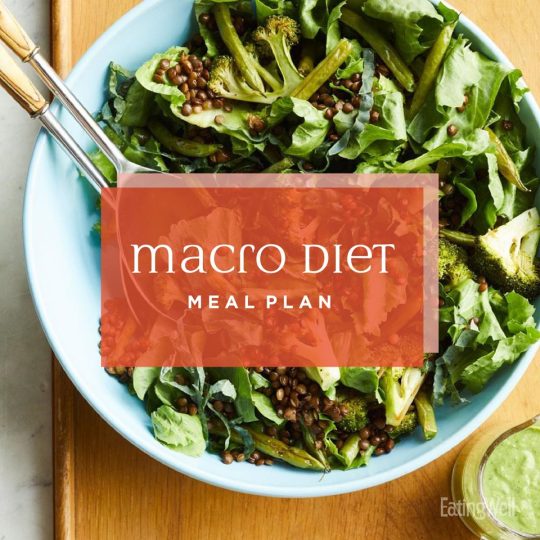
Source: https://www.healthline.com/nutrition/fast-metabolism-diet-review
0 notes
Text
How To “Cure” IBS: The DIY Guide To Do It Naturally
Irritable Bowel Syndrome (IBS) is a common condition that is characterized by ongoing digestive symptoms.
It can greatly lower your quality of life, and in severe cases, can even prevent sufferers from leaving their home.
This article looks at the proven natural ways to get on top of your IBS and reduce your symptoms.
What is IBS?
IBS is a chronic gastrointestinal condition.
Common symptoms include diarrhea, constipation, bloating, excess wind and stomach pain.
There are no adequate medical tests that can diagnose IBS.
A person’s symptoms and also the absence of other medical conditions are used to diagnose the condition.
How To Calm An IBS Flare Up
IBS flare ups can last from a few hours to several days.
There are many ways to quickly get on top of symptoms.
Implementing these strategies, plus letting time run its course, are the most effective ways to calm an IBS flare up.
Return To A Strict Low FODMAP Diet
The low FODMAP diet is a two-phase diet, and a scientifically-proven therapy to manage IBS (1).
The first phase of the diet involves removing foods that are rich in specific sugars (FODMAPs) that are likely culprits for IBS symptoms.
Once symptom control is achieved, each group of FODMAPs are re-introduced one at a time to identify which are responsible for that individual’s symptoms.
Many consider the initial strict version of the low FODMAP diet their safe diet.
It is a good idea to return to this baseline diet during a flare to let your symptoms pass.
Take Peppermint Oil
Peppermint oil is an effective remedy that can drastically improve IBS symptoms (2).
It is thought to work by relaxing the muscles found in the stomach and digestive tract, which can then speed up or slow down the motility of the GI tract (3, 4).
This results in relief from symptoms such as nausea, bloating, flatulence and altered bowel habits.
Use A Hot Water Bottle
Heat therapy can offer quick relief from painful IBS symptoms by relaxing the muscles in the GI tract.
Do Things That Will Help You Feel More Relaxed
IBS sufferers tend to have an extremely sensitive gut that responds more easily to stress.
Trying strategies that make you feel more relaxed can reduce the sensitivity of the gut and help overcome your IBS symptoms faster.
Some relaxation methods include mindfulness meditation, yoga or even a gentle walk if you’re feeling up to it.
Treat Your Symptoms With Appropriate Supplements Or Medication
The most popular herbal supplement that also has scientific backing, is called Iberogast (5).
It contains a mixture of herbs that can assist abdominal pain, flatulence and altered bowel habits.
There may also be some over the counter medication that can help IBS symptoms.
It is best to discuss your needs with a pharmacist.
Summary: There are a number of strategies that could be used to calm an IBS flare up. Symptoms will also pass with time.
How To Cure IBS Naturally
There is no “cure” for IBS at the moment, however over the long term the symptoms can be managed effectively with a number of strategies.
Try The Low FODMAP Diet From Start To Finish
Continuing on from above, the low FODMAP diet contains two main phases.
The first phase reduces all high FODMAP foods to confirm a reaction to FODMAPs.
Then the second phase involves testing each FODMAP group one at a time to identify which groups you have been reacting to and at what level.
This second phase of the diet is arguably the most important part of the diet as it enables you to learn what your individual tolerance level is to different FODMAPs, and reintroduce some of your favourite foods as well.
Reduce Your Intake Of Known Gut Irritants
There are several known non-FODMAP triggers of digestive problems. These include:
caffeine
alcohol
fatty foods and
spicy foods
Removing these triggers from your diet can be an another way to effectively manage IBS in the long term.
More Or Less Fiber May Help
The evidence for the best type and amount of fiber in the diet is conflicting.
Some people are certain that a high fiber diet helps their symptoms, whereas others find a low fiber diet is more effective.
The type of fiber supplement that has the most research completed on it is psyllium husk (6).
Psyllium husk is a soluble fiber, meaning that it dissolves in water.
It soaks up water like a sponge to add bulk to loose stools, but also softens hard stools to help them pass easier.
Try The FAILSAFE Diet
The FAILSAFE diet is an alternative diet therapy that can be considered when the low FODMAP diet doesn’t provide good symptom relief.
It’s another type of elimination diet that aims to identify a sensitivity to particular natural food chemicals and artificial food additives.
Similar to the low FODMAP diet, there are two main phases that involve an elimination phase to confirm a reaction, followed by a reintroduction process.
Manage Your Stress And Anxiety
As mentioned earlier, people with IBS have an overly sensitive gut with unpredictable digestive symptoms.
This unpredictability is highly stressful and anxiety-provoking.
Yet, this stress and anxiety can make digestive symptoms worse.
It can be seen as an unpleasant feedback loop.
For this reason, practicing ways to manage stress and anxiety helps to keep on top of IBS symptoms in the long term.
Mindfulness meditation can be useful, as can yoga or some moderate exercise.
Psychological Therapies For IBS
Continuing on from above, the gut and the mind are strongly linked.
If the mind is calm, then gut symptoms improve.
Thus, it makes sense that psychological therapies play an important role in keeping IBS symptoms to a minimum.
Psychological therapies include cognitive behavioural therapy and gut-direct hypnotherapy .
Try A Probiotic Supplement
Probiotic supplements are a promising additional treatment option for those with IBS (7).
The term ‘probiotics’ refers to beneficial bacteria that we consume specifically for health benefits.
However, probiotic supplements are not created equal.
They vary in the strains they contain and the amounts.
A comprehensive review on the best probiotics for IBS can be found here.
Try Peppermint Oil And Other Herbal Remedies
As mentioned earlier, ingesting peppermint oil and herbal remedies such as Iberogast are effective ways to manage a flare in IBS symptoms.
However, they may also be effective in managing IBS symptoms long term when taken regularly as a precaution.
Summary: To date, there is no cure for IBS. However, it can be managed over the long term with a number of diet and lifestyle strategies.
Effective IBS Treatment Is Achievable
While science is yet to uncover a cure for IBS, there are a number of short term and long term strategies that are effective.
IBS treatment starts with diet and lifestyle – minimising triggers, identifying food intolerance, and managing stress and anxiety.
There are also a number of additional strategies that can be used to manage IBS over the long term including a change in fiber intake, probiotics, and herbal remedies.
Source: https://www.dietvsdisease.org/how-to-cure-ibs/

0 notes
Text
Milk expression within 8 hours associated with lactation success for VLBW infants in NICU
A study led by physician researchers at Boston Medical Center has shown that first milk expression within eight hours of giving birth is associated with the highest probability of mothers of very low-birth-weight infants being able to provide milk throughout hospitalization in the neonatal intensive care unit. The study results, published in Obstetrics and Gynecology, help better inform perinatal providers and new mothers how to prioritize the many aspects of perinatal care after delivery of a very low-birth-weight infant.
Mother's milk has many benefits for very low-birth-rate infants, including reduction of necrotizing enterocolitis, sepsis, and chronic lung disease, and improvement in later childhood development. However, mothers of very low-birth-rate infants often have challenges making milk. They are more likely to have complications during or after delivery and comorbid health conditions that affect milk production, such as diabetes. They are also more likely to be separated from their newborn for a prolonged period of time after birth.
Because of these challenges, lactation support for mothers of very low-birth-weight infants is crucial. The World Health Organization's Baby-Friendly Hospital Initiative suggested milk expression within six hours after birth as one strategy for support. However, evidence for this time period is limited. In addition, milk expression within six hours can be difficult due to the need for intensive monitoring of newborns and/or mothers.
"Mothers who have recently delivered very low-birth-weight infants have a number of competing needs," says Margaret G. Parker, MD, MPH, a neonatologist at Boston Medical Center and the study's corresponding author. "Our data-driven approach to determining optimal time of first milk expression can help providers balance the need for safe maternal care with effective support to create long-term lactation success."
The researchers used data from 1,157 mother-baby pairs in nine Massachusetts hospitals. The infants were all very low-birth-weight infants who spent time in the neonatal intensive care unit. They found 70 percent of infants whose mothers expressed first milk within eight hours of delivery were being fed any mother's milk at discharge or transfer, compared with 52 percent of infants whose mothers expressed first milk 9-24 hours after delivery.
The authors note that given these results, randomized control trials are needed to further establish the causal relationship between timing of first milk expression and long-term lactation success among mothers of very low-birth-weight infants.
Story Source:
Materials provided by Boston Medical Center. Note: Content may be edited for style and length.
Source: https://www.sciencedaily.com/releases/2019/05/190509173339.htm
0 notes
Text
The Troubling Paradox Of Instagram Beauty
I ran out of primer the other day. That doesn’t happen often, because I almost never wear primer. But I decided I’d better get on replacing it soon enough, because those “I Need Primer”-level special occasions like parties, award ceremonies, and weddings always seem to creep up on me, and I was damned if I’d endure another night self-conscious about foundation dripping down my face.
So I went to the drugstore. And as I perused the aisles, zeroing in on concealers, foundations, powders, pallets, and primers, I noticed a curious amount of products with Instagram-related names. There’s “#InstaReady” BB Cream. “Photo Focus” primer and concealer. “PhotoReady” and “Insta-Filter” foundation. “#NoFilter” setting powder.
Before anyone gets on me for my pretentiousness: yes, I still bought some primer. And a setting powder. But I thought about the names for a long time after, and what they symbolize: the unspoken, unflinching understanding women have with ourselves, our images, and social media. We know that that the perfection we see on Instagram is not real. And yet we still strive for it.
This should probably come as little surprise for most millennial women; those of us who came of age in the early- to mid-aughts were surely inundated with campaigns by Dove, which drew attention to how much retouching goes into modern beauty advertising and media content (never mind that Dove continued to sell products to make our hair thicker, make our cellulite disappear and, in some countries, lighten skin). Dove wasn’t the only brand trying to do this (although as a major CPG advertiser, it had the biggest resources for media spend), and it’s unlikely that any teenage girl walked out of the first decade of the 2000s without knowing that the images we saw on those glossy pages — now on phone screens — were a far cry from reality.
So the awareness campaigns were effective in that regard. But were they effective in actually curbing participation in the system? That likely was never one of Dove’s goals. It takes true marketing talent to effectively convey such a conflicting message: “Tell women they’re beautiful without products, but don’t let it affect how much they spend on them.”
Women are engaging in makeup as much as they ever were before. There’s more creativity in the field and more opportunity to showcase that creativity. But there’s something strangely dark and just a little sad about the way we wink at ourselves with a lot of these purchases. We know that what we see on Instagram couldn’t be achieved without the right combination of high-end beauty products and filters (or, in rare cases, winning the rarest of rare genetic lotteries), but we strive for it anyway. We know that no boy has ever had eyebrows as glamorous or perfectly curved as the bushy-browed IG models we want to emulate, but we still buy a product called “Boy Brow.”
I am not above this by any means. I do it too. I am always looking for the best “blur effect” skin products because I will always have just enough breakouts, scars of former breakouts, burst capillaries, and dry spots for me to be convinced that no one else looks like this (even though everyone else looks like this). I am always longing to give my eyebrows more volume, more depth, more authority, and pretending that I didn’t spend the entire pre-high school summer of 2003 waxing and tweezing my once-bushy eyebrows into pencil-thing nothings. I apply lip balm obsessively in the hopes that the lines in my lips — fucking lines — will simply smooth over.
We know Insta-beauty is an overly-dewy, high-exposure lie, so why are we so attached to it? It applies to the way we see other women, too. Now, when I look at a woman with perfectly illuminated cheekbones atop masterfully shaded hollows, my first thought, while still one of admiration, is not, “Wow, she has beautiful bone structure,” but rather, “Wow, I wish I could be that good at contouring.” When I see a woman whose eyebrows are thick, dark, striking, and have all the right curves, instead of thinking of what beautiful features she has, I sigh in awe at how amazingly she does her eyebrows.
In a way, that’s probably a good thing — we’re complimenting women for things that they’ve done, things that they can help, things they’ve worked on, rather than the things they were simply born with. But it still feels strange at this point in time to be in awe of all the ways someone can manipulate their own face to look like something they’re not. I’m not talking about Hollywood Effects-level makeup artistry, but rather someone who is able to invest the time and concentration and accumulate all the talent in the world to learn how to make themselves look “better” than they are.
It’s one of the most admirable talents I can think of, one that most people will never get paid for. And I think it makes me sad that the talent exists. And what part do I play? I may be complimenting a woman on her skills with a makeup brush, but I’m ultimately still just focused on how a woman looks. She knew how to buy the right things and use them the right way. But she’s so much more.
And finally, where do we go from here? I’ve never been satisfied with the outlook of “this is bad, but at least if we’re self-aware, it will be less bad.” We already know that we’re buying into a lie, and we seem to be okay with it. But I can’t pretend we put ourselves in this situation. As women, we’ve been handed a harsh and cruel deck: cake it on, or risk potentially not advancing in your career, your personal life, your social circle. It shouldn’t be up to us to break that self-fulfilling prophecy, but it looks like we might have to.
Contrary to whatever Prince EA poem you’ve listened to lately, the world’s problems and collective personal issues can’t simply be solved by taking fewer selfies. But perhaps it starts with the decision we make in the morning to wear a little less makeup (or not wear any at all), to not stress so much about covering that zit that no one else notices anyway, to decide that our eyebrows are fine, thin and light as they are. Maybe it’s in letting go of the need to share our picture-perfect visage with the world. Maybe it’s in stopping ourselves from telling our best friend how much we love her highlighter and instead just ask her a question and find out something new. I don’t necessarily know where to start, but I know I want to.
Bree Rody-Mantha is a full-time business journalist and part-time dance teacher based in Toronto. She covered Toronto City Hall during the Rob Ford era before transitioning to business journalism. Her areas of specialty include the influencer market, advertising, media buying, and technology. Follow her on Twitter.
Image via Unsplash
Like this story? Follow The Financial Diet on Facebook, Instagram, and Twitter for daily tips and inspiration, and sign up for our email newsletter here.
Source: https://thefinancialdiet.com/the-troubling-paradox-of-instagram-beauty/
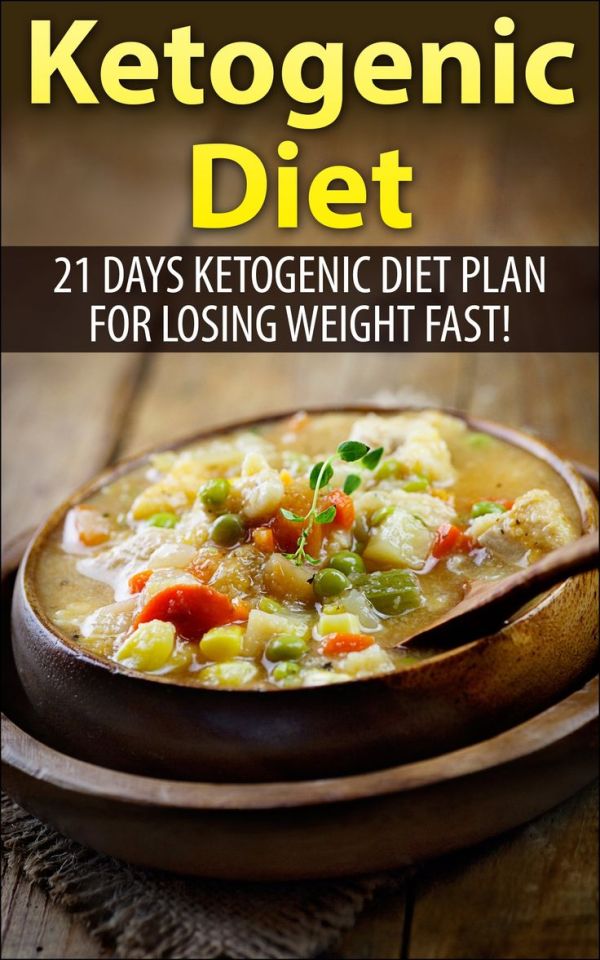
0 notes
Text
The Candida Diet: Beginner's Guide and Meal Plan - Healthline - Healthline
Candida is the most common fungus in the human body. It’s often found in areas like the mouth, skin, digestive tract, toenails, rectum and vagina (1).
It’s generally harmless, but an overgrowth of this fungus can lead to infection (2).
The candida diet is a strict diet that alleviates symptoms of candida infection.
Here’s a beginner’s guide to the candida diet and a sample meal plan.

Share on Pinterest
There are more than 150 known candida species living in various parts of your body. These species aid digestion and nutrient absorption from food.
An overgrowth of candida can break down the wall of your gastrointestinal tract. This releases harmful toxins into your bloodstream, causing infection (3).
Symptoms of an infection include (4, 5, 6, 7):
Nausea
Bloating, constipation or diarrhea
Chronic fatigue
Skin issues such as eczema or rashes
Recurrent urinary tract infections
Irritability and mood swings
Anxiety or depression
Joint pain
Strong sugar cravings
Despite the large number of candida species in your body, only 15 can cause an infection. Candida albicans is the most common infection culprit, accounting for over half of all cases (3).
Worldwide rates of candida infection remain high — having stayed constant for the past two decades (8).
Risk Factors for Infection
There are several risk factors for candida infection, including (9, 10, 11, 12, 13, 14):
If you have any of these risk factors, try addressing them through a change in diet or lifestyle. Consider incorporating meditation or stress management into your schedule.
Summary Over 150 different candida species live in your body. Of these, 15 can cause infection if they overgrow. Risk factors for candida infection include inadequate diet, high stress levels, a weak immune system and poor hand hygiene.
Though there is an overwhelming amount of data regarding the risk factors of candida overgrowth, treatment plans are inconsistent and insufficiently studied (15).
However, one possible treatment is the candida diet.
This diet excludes sugar, gluten, alcohol, certain dairy products and harmful additives while encouraging low-sugar fruits, non-starchy vegetables and gluten-free foods. The science behind this regimen is as follows:
Gluten is barred because research indicates that the gluten compound zonulin may damage the lining of your digestive tract (16).
Sugar may feed candida growth, causing the infection to worsen (17).
Since lactose malabsorption is common and can trigger symptoms, some dairy products are also banned (18).
Foods containing artificial ingredients, high mold content, preservatives and pesticides can continue to feed bacterial overgrowth and lead to continuous inflammation. Therefore, they are also avoided (19, 20):
Alcohol and caffeine are discouraged in order to support healthy lifestyle practices and prevent dietary cheating.
Overall, this diet is designed to reduce inflammation and incorporate wholesome foods that may heal your gut. Over time, these practices could help kill off candida overgrowth.
On the other hand, failing to follow this diet could amplify your symptoms. When your body experiences excessive inflammation and disrupted gut bacteria, the symptoms of candida infection could worsen (21).
Summary The candida diet is designed to reduce inflammation and ultimately cure candida infection by restricting certain food groups, such as gluten, sugar, alcohol, certain dairy products and harmful additives.
Before beginning the candida diet, advocates recommend going on a candida cleanse. This is a short-term diet that is thought to alleviate stress on your digestive tract and release toxins from your body.
Doing a cleanse can also prepare your body and mindset for the candida diet. There are many ways to do a cleanse, but two common ways are:
Drinking only fluids, such as lemon water or bone broth.
Eating mainly vegetables, such as salads and steamed vegetables alongside a small amount of protein throughout the day.
Some people may experience negative symptoms while starting a cleanse, such as fatigue, headaches, mood swings or changes in sleep patterns.
Keep in mind that the candida cleanse should not last more than a few days.
After you complete the cleanse, you can start following the candida diet’s food guidelines.
There is no specific timetable for the candida diet. Some people may experience relief in a matter of weeks, others may require many months to see a positive effect.
It’s best to work with a healthcare provider when undertaking the candida diet to ensure adequate nutrient intake.
Before starting the candida diet, there are several things to consider:
Start out slow: Instead of removing sugar, caffeine and gluten from your diet all at once, focus on removing one thing at a time to ease the process.
Remove any possible risk factors: To reduce symptoms as fast as possible, it’s important to eliminate any risk factors that could prevent progress — such as alcohol, poor hygiene or sugary foods.
It’s meant to be short-term: This diet is meant to be used short-term until your symptoms have improved. It’s not meant to replace a long-term diet plan.
Summary To start the candida diet, you should do a candida cleanse followed by strict adherence to the diet’s food list. It’s best to work with a healthcare provider when following this diet.
Organic, low-sugar, unprocessed and chemical-free foods can support healing and reduce symptoms. Focus on incorporating these foods while on the candida diet (22, 23):
Low-sugar fruits: Lemon, limes, berries (may be eaten in small amounts).
Non-starchy vegetables: Asparagus, Brussels sprouts, cabbage, broccoli, kale, celery, cucumber, eggplant, onion, spinach, zucchini, tomatoes and rutabaga (best if eaten raw or steamed).
Gluten-free grains: Millet, quinoa, oat bran and buckwheat.
High-quality protein: Chicken, eggs, salmon, turkey and sardines (organic, pasture-raised and wild-caught varieties are best).
Healthy fats: Avocado, olives, unrefined coconut oil, flax oil, extra-virgin olive oil and sesame oil.
Certain dairy products: Butter, ghee, organic kefir or plain yogurt.
Nuts and seeds low in mold: Almonds, walnuts, sunflower seeds, coconut or flaxseed.
Herbs and spices: Black pepper, salt, cinnamon, dill, garlic, ginger, oregano, rosemary, paprika, turmeric and thyme.
Condiments: Apple cider vinegar, coconut aminos and sauerkraut.
No-sugar sweeteners: Stevia, erythritol and xylitol.
Non-caffeinated beverages: Herbal teas, chicory coffee, filtered water, homemade almond milk, coconut milk (look for one without additives) and water infused with lemon or lime.
Summary Eat organic, low-sugar, high-quality produce, meats and fats to help reduce pesticide exposure and increase nutrient absorption.
The candida diet is a strict diet that eliminates sugar, gluten, alcohol and some dairy products, as these types of foods are thought to promote candida overgrowth (24, 25).
The list of foods to avoid on the candida diet include:
High-sugar fruits: Bananas, dates, raisins, grapes and mango.
Grains that contain gluten: Wheat, rye, barley and spelt.
Certain meats: Deli meats and farm-raised fish.
Refined oils and fats: Canola oil, soybean oil, sunflower oil or margarine.
Condiments: Ketchup, soy sauce, white vinegar, BBQ sauce, horseradish or mayonnaise.
Certain dairy products: Cheese, milk and cream.
Sugar and artificial sweeteners: Aspartame, agave, cane sugar, corn syrup, honey, maple syrup, molasses and sugar.
Nuts and seeds higher in mold: Walnuts, peanuts, cashews, pecans and pistachios.
Caffeine, alcohol and sugary beverages: Caffeinated teas, coffee, energy drinks, soda, fruit juice, beer, wine or spirits.
Additives: Nitrates, dextrose or sulfates.
Summary Avoid high-sugar foods, additives, processed foods, certain meats, fats and oils — as well as caffeinated and alcoholic beverages — to support healing and relieve symptoms.
Other dietary changes may also subdue candida bacteria. These foods, beverages and supplements may kill off candida overgrowth:
Pau d’arco tea: Pau d’arco is a tree native to the Amazon rainforest that some test-tube and mouse studies link to decreased infection due to its anti-inflammatory properties (26, 27, 28).
Bone broth: This nutrient-dense beverage made from animal bones boasts vitamins and minerals, such as collagen, that some studies suggest can improve your immune and digestive systems (29, 30).
Algae: As one of the highest food sources of chlorophyll, algae may support detoxification of carcinogens in your body (31).
Probiotics: Taken as supplements, these healthy bacteria may help alleviate inflammation, kill off harmful organisms and reduce prevalence of candida and infection symptoms (32, 33, 34).
Lavender oil: This essential oil may reduce progression and spread of candida (35).
Summary Pau d’arco tea, bone broth, algae, probiotics and lavender oil are additional substances that could potentially eradicate candida overgrowth due to their particular health benefits.
This sample menu provides foods that are acceptable on the candida diet. Adjust this menu based on your own preferences.
Monday
Breakfast: Scrambled eggs with tomatoes and avocado on the side
Lunch: Turkey atop a salad of greens, avocado slices, cabbage, broccoli and an olive oil dressing
Dinner: Stir-fry of quinoa, chicken breast, steamed vegetables and coconut aminos
Tuesday
Breakfast: Yogurt parfait made with plain yogurt, 1/4 cup (25 grams) of berries, cinnamon and almonds
Lunch: Thai red curry chicken (try this recipe)
Dinner: Salmon cakes served with steamed broccoli and a cup of bone broth
Wednesday
Breakfast: Turkey-and-sage breakfast sausages (like these) with a side of Brussels sprouts
Lunch: Lemon-roasted chicken served over salad greens
Dinner: Hamburger patty (no bun), topped with avocado and served with steamed vegetables and sauerkraut
Thursday
Breakfast: Vegetable omelet made with eggs, shallots, spinach and tomatoes
Lunch: Leftover turkey-and-sage breakfast sausages with a side of sautéed cabbage
Dinner: Coconut curry chicken over quinoa and steamed vegetables
Friday
Breakfast: Omelet made with red peppers, onions, kale and fried eggs
Lunch: Turkey meatballs with a kale salad and millet topped with ghee
Dinner: Wild-caught salmon seasoned with lemon and dill, plus a side of asparagus
Saturday
Breakfast: Buckwheat breakfast muffins (try this recipe) with chicory coffee
Lunch: Leftover coconut curry chicken over quinoa and steamed vegetables
Dinner: Zucchini noodles topped with chicken, raw garlic, pesto and olive oil
Sunday
Breakfast: Smoothie made from plain kefir, a handful of berries, almond butter, coconut and cinnamon
Lunch: Chef salad of hard boiled eggs, turkey, tomatoes, cucumbers, olives and an olive-oil-based dressing
Dinner: Chicken fajita bowl made with chicken, peppers, onions, cilantro, avocado and salad greens
Summary Although this diet can be restrictive, there are still plenty of healthy, scrumptious options available.
Despite the lack of research on the candida diet, it may do more than simply relieve symptoms.
The diet consists of whole foods that can also be beneficial for weight loss, heart health, gut function and reduced inflammation in your body (36, 37, 38).
The diet also focuses on removing sugary foods, which have been linked to obesity, diabetes, heart disease and metabolic syndrome (39, 40).
A diet such as this can be beneficial for anyone — even those without candida overgrowth.
Summary The candida diet is an anti-inflammatory and nutrient-rich diet that may offer numerous health benefits beyond reduced candida overgrowth.
One major pitfall of the candida diet is that there is little human research into its effectiveness — and available research is controversial.
One study in 120 people on the candida diet observed improvement in stool symptoms in 70% of participants after three months (41).
An animal study found that the consumption of sugar increased candida growth in the digestive tract (42).
On the other hand, one small study examined the growth of candida before, during and after a high-sugar diet in healthy people. Researchers discovered that a high-sugar diet had a limited effect on the growth of candida (43).
Another negative is the diet’s strictness. Sugar, gluten, most fruits, starchy vegetables, some meats, nuts, seeds, alcohol and caffeine are banned on this diet. Therefore, it requires more work to adjust to this eating style.
The candida diet may also pose difficulties if you’re on a budget or don’t enjoy cooking and meal planning.
Fortunately, this diet has a limited scope. It’s intended to be followed only while you are experiencing symptoms of candida infection.
Summary Major downsides of the candida diet include a lack of research and strict food rules. Therefore, it may not work for everyone.
The candida diet is designed to kill off candida overgrowth by eliminating sugar, gluten, alcohol and some dairy products.
It focuses on organic, low-sugar, high-quality produce, meats and fats.
Symptom relief can differ between people and may depend on your adherence to the diet, duration and symptom severity.
The first signs of improvement may include an increase in energy and focus, as well as a decrease in digestive distress.
While you may experience improved symptoms, studies on this diet are lacking and conflicting.
Nonetheless, if you have been diagnosed with a candida infection, it may be helpful to see if this diet works for you.
Source: https://www.healthline.com/nutrition/candida-diet

0 notes
Text
My 7 Steps To Becoming A Serious Investor On A $37,000 Salary | Making it Work
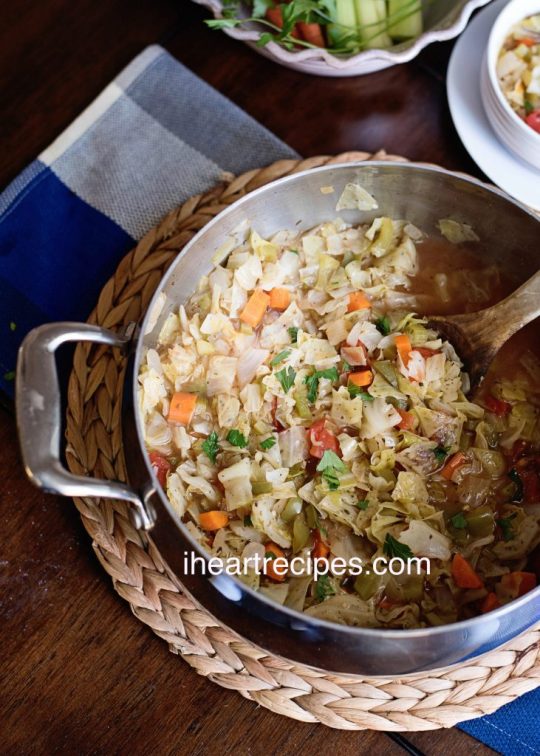
Source: http://www.youtube.com/oembed?format=xml&url=https%3A%2F%2Fwww.youtube.com%2Fwatch%3Fv%3DifFm3Um_QPo
0 notes
Text
Keto cheese chips cooking video
Do you miss potato chips on the keto diet? Or maybe the taco shells? Look no further; in this video, you’ll get to learn how to make your own keto cheese chips. We think these cheezylicious babies might be your next favorite keto treat. Take the experience to the next level with a yummy dip, use them as taco shells, or something else – the only limit is your imagination!
Watch the video above and feel free to share it. Here’s the full written recipe:

Source: https://www.dietdoctor.com/keto-cheese-chips-cooking-video
0 notes